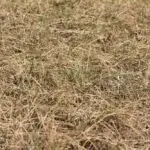The key to a healthy lawn lies just below the surface: the soil. When soil gets compacted, it can have a seriously negative effect on your lawn. Lawn aeration is one of the best methods available for loosening it back up and ensuring your grass has the environment it needs to flourish. In this blog, Lawn Master presents important things about lawn aeration.
The top benefits of lawn aeration
Main benefits
The word aerate literally means to supply or impregnate something (soil in this case) with air. Lawn aeration does this by creating small holes throughout the lawn. These loosen up compacted soil and lead to several benefits, such as:
Increased circulation – Just like all other living things, plants need to breath. When soil gets compacted, it cuts off gas exchange within the root system. Aeration creates more room for proper air circulation.
Increased water/nutrient absorption – Aeration creates channels for water and fertilizer to sink deeper into the soil. It also allows better retention, which is excellent for water conservation purposes and letting nutrient-rich fertilizer work its magic.
Reduced runoff – Water has a harder time sinking into compacted soil. This can cause drainage issues and erosion where the water pools up and runs off the lawn. Proper aeration quickly addresses this.
Reduced pests and weeds – Weeds and pests thrive in unhealthy, nutrient deficient soil. Preventative care such as aeration is much more efficient than treating an infestation after it’s already taken hold.
Reduced need for thatching – Thatch is when dead leaves and other organic matter builds up on your lawn. A little is healthy, but too much can be harmful. Regular lawn aeration prevents excessive amounts.
All of these benefits lead to revitalized soil that fosters stronger, deeper root systems, and encourages beneficial organisms like bacteria and earthworms.
How does core aeration work?
For this article we’ll be focusing on core lawn aeration, since most experts agree it’s the most practical and effective method. Core aeration uses hollow tines that poke holes into the ground (typically around three inches deep), and pull up “plugs” of soil. The holes allow water, fertilizer and seeds, to better penetrate the soil. Types of core aeration include:
Manual core aerators – This is essentially a handheld bar with a few hollow tines on the bottom. You use your foot to push them into the ground, and pull up plugs of soil. Perfect for small areas and spot treatments.
Motorized aerators – These look and operate similar to a lawnmower, except instead of blades, they have a series of coring tines. Motorized options are more practical for larger lawns. People typically rent, as they can be expensive.
Tow or Pull behind aerators – This is another good option for large lawns. A tow aerator hitches to the back of a lawn tractor, greatly reducing the physical effort required to use it. It’s also cheaper, but doesn’t make sense unless you have something to hitch it to.
Signs it’s time to do lawn aeration
Weed overgrowth and yellowish/brown patches of grass are usually signs of poor soil quality (and can also indicate insects!). The same is true for wilting leaves and bare patches.
Compacted soil is the main reason to aerate, and luckily, easy to spot. A simple test is the “screwdriver test”: Push a screwdriver about six inches into the soil. If it’s difficult, that shows soil compaction.
How lawn aeration is done properly?
Aerating is a lot easier than it seems. With the correct equipment, the average lawn can be finished in under an hour. There is however some simple preparation to consider.
Make sure to water your lawn a day before aeration. This loosens up dried and compacted soil enough for the aerator to do its job. A day after a decent rain is also fine. Don’t do it too soon, or the cores will stick in the tines.
Make sure to mow the lawn before aerating. Mowing after aeration isn’t recommended because it can ruin the core plugs covering the lawn. Set the mower blades at around two inches long.
Make sure to mark sprinklers before aeration. Otherwise, sprinkler heads and shallow lines are at risk of being damaged. You can use lawn flags for this. If you’re unsure of the placement, turning on the irrigation system is the easiest way to find them.
How often should you do Lawn Aeration?
Once or twice a year is generally enough. Too much and you risk creating drainage issues and stressing the lawn. Also try to avoid aeration during times of drought. It may seem like a good idea, but it actually just stresses the lawn more than it already is.
Lawn Aeration Aftercare
After lawn aeration, be sure to leave the plugs on the lawn; they’ll decompose and release nutrients into the soil. Post-lawn aeration is also the best time to overseed any bare patches and fertilize the lawn for a much-needed nutrient boost.
Lawn Master offers a free consultation if you need assistance with your lawn or garden. We’ve spent over two decades providing Ada and Canyon counties with a wide range of lawn care services. Reach out to us at (208) 989-9261 and book your appointment today!



